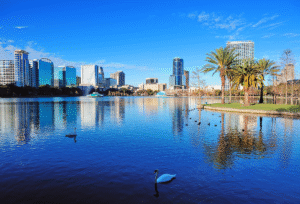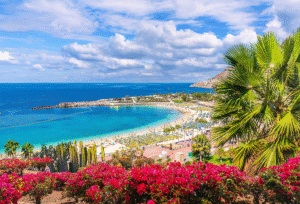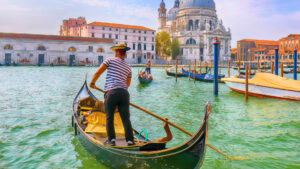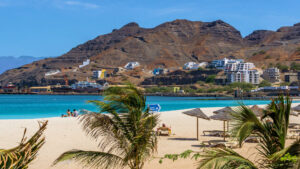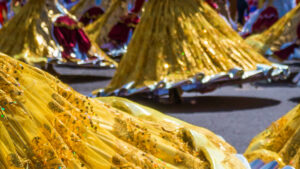If you’ve never heard of the Northern Lights, think of them as nighttime rainbows. Also known as the Aurora Borealis, they’re created when solar wind particles collide with air molecules, which are then manifested in a brilliant display of colourful ribbons of light. Hunting the Northern Lights has become a popular activity, as catching sight of this phenomenon gives you those once-in-a-lifetime, pinch-me kind of chills.
Get the conditions just right
The general rule of thumb for seeing the Northern Lights is, the farther north you head, the better chance you’ll have. They’re most prevalent in skies within the Arctic Circle. The Northern Lights season is between September and April, especially the days surrounding the spring and autumnal equinoxes. The less clouds and light pollution, the better the conditions. And it’ll need to be night, of course.
You can close your Google image window, because pictures of the Northern Lights just don’t do them any justice. In order to fully appreciate these beauties, you’ve got to see them in action. Here are the top spots to catch them lighting up the night sky.
Reykjavik, Iceland
Iceland is widely renowned as one of the best places to see the Northern Lights – the vast majority of the island is uninhabitable, making it subject to very little light pollution.
What’s more is, you can stay in the city’s capital Reykjavik – where roughly a third of the country’s population lives – and still have easy access to the Northern Lights with tour groups. That means you’ll have Reykjavik’s restaurants and craft beer scene by day, and rainbow-lit skies by night.
Lapland, Finland
Finland’s Lapland region might be known as Santa-palooza – it’s Old Saint Nick’s official homebase – but it’s also a popular spot to catch the Northern Lights.
Out here, light pollution is at an all-time minimum, as the region’s population of reindeer matches the people. It’s estimated that the Northern Lights are visible for roughly 200 clear nights a year in Lapland, so you when you aren’t schmoozing with Santa and his elves, you can bear the cold for some aurora-gazing.
Svalbard, Norway
Norway’s Svalbard islands are about as far north as you can go while still staying in Europe – they’re about halfway between Norway and the North Pole.
From mid-November to January, the islands are cloaked in complete darkness 24-hours a day, so your chances of seeing the Northern Lights are at an all-time high. This wintery phenomenon is called the ‘polar night’. You might even spot a polar bear while you’re up there – Svalbard’s polar bear population is said to be in the thousands.
Northern Canada
To the untrained eye, Canada doesn’t seem quite as rugged-chic as the other wintery destinations on this list, but it’s actually a top spot to see the Northern Lights.
The ‘aurora oval’ – the geographical location in which the Northern Lights typically shine – covers almost the entirety of Canada, making just about everywhere a potential viewing point. Northern Canada is the obvious choice for Northern Light-hunts, especially the provinces of Yukon, Northern Saskatchewan and British Columbia and the Northwest Territories.
Northern Scotland
As it turns out, the Northern Lights might actually be closer than you think. They’ve been known to dance above northern regions in Scotland, so you won’t necessarily need to grab a flight to see them. A surefire spot to visit is Scotland’s Cairngorms National Park – its peaks are some of the tallest in all of the United Kingdom. They’re also where you can hike and ski in the winter months.
Did we leave out your favourite Northern Lights locale? Let us know in the comments.

